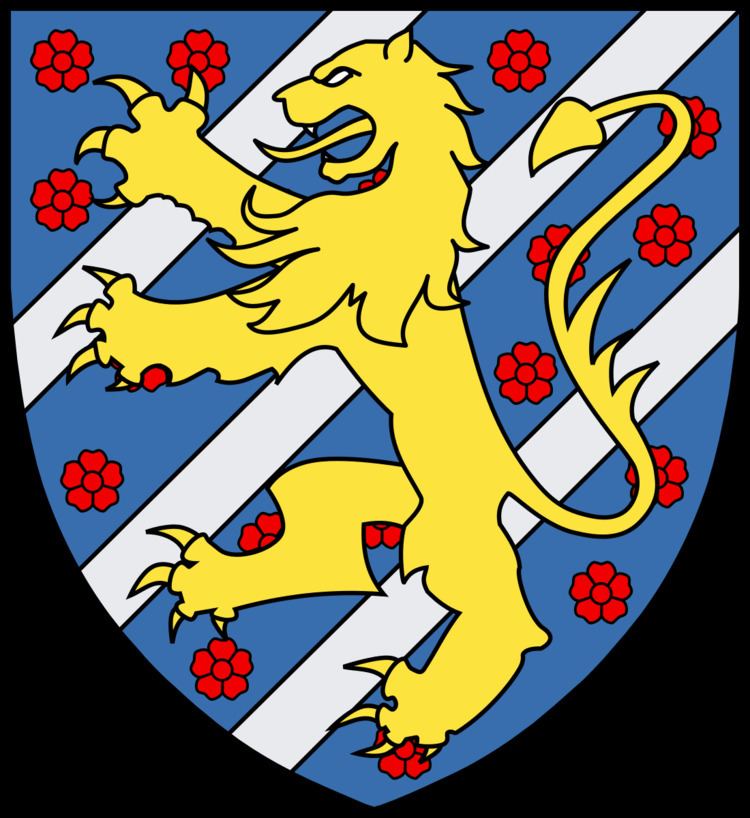Name Euphemia Sweden Died 1370 | House House of Bjelbo | |
 | ||
Issue Henry III, Duke of MecklenburgAlbert of SwedenMagnus I, Duke of MecklenburgIngeborg, Duchess of Bavaria, Countess of Holstein-RendsburgAnna of Mecklenburg Father Eric, Duke of Sodermanland Children Albert, King of Sweden Parents Eric, Duke of Sodermanland, Ingeborg of Norway Similar People Albert - King of Sweden, Magnus IV of Sweden, Haakon V of Norway, Magnus III of Sweden | ||
Euphemia of Sweden (Swedish: Eufemia Eriksdotter; 1317 – 16 June 1370) was a Swedish princess, spouse of Albert II, Duke of Mecklenburg, Duchess consort of Mecklenburg, heiress of Sweden and of Norway, and mother of King Albert of Sweden.
Contents
Early life
Euphemia was born in 1317 to Eric of Sweden (b. c. 1282, murdered 1318), Duke of Södermanland, second son of King Magnus I of Sweden, and Princess Ingeborg of Norway (1301 – c. 1360), the heiress and the only legitimate daughter of King Haakon V of Norway, whose hereditary Kingdom of Norway thus became the inheritance of Euphemia and her brothers.
In 1319, her infant elder brother Magnus VII of Norway (1316–1374) succeeded their maternal grandfather to the throne of Norway. That same year, Swedish nobles exiled their uncle, King Birger of Sweden, after which the infant Magnus was elected King of Sweden. Their mother Ingeborg had a seat in the guardian government as well as the position of an independent ruler of her own fiefs, and played an important part during their childhood and adolescence.
The 24 July 1321 marriage contract for Euphemia was signed in Bohus Castle in her mother's fief in Bohuslän. Her mother had plans to take control over Danish Scania, next to her duchy. The marriage was arranged with the terms that Mecklenburg, Saxony, Holstein, Rendsburg and Schleswig would assist Ingeborg in the conquest of Scania. This was approved by the council of Norway but not Sweden. When Ingeborg's forces under command of her lover Knut Porse invaded Scania in 1322–23, Mecklenburg betrayed her and the alliance was broken. Eventually, the affair of Euphemia's marriage led to a conflict between Ingeborg and the governments of Sweden and Norway, which led to the demise of Ingeborg's political position in the guardian governments. The marriage took place anyway, after a fifteen-year engagement. Euphemia did not lack influence in Sweden. She is known to have acted as the witness of seals in several documents. In 1335, when King Magnus appointed Nils Abjörnsson (Sparre av Tofta) to drots, the condition that Euphemia would act as his adviser was included in his appointment.
Duchess of Mecklenburg
Euphemia was married in Rostock on April 10, 1336, to her distant kinsman, Albert II, Duke of Mecklenburg (1318 – 2 February 1379), a North-German lord deeply interested in obtaining some power in Scandinavia, e.g. fiefs or income. Later, Albert was to gain the nickname "Fox of Mecklenburg", to reflect his intrigues as well as avarice. Later the same year, the couple returned to Sweden with Rudolf of Saxony and Henry of Holstein to be present at the coronation of her brother and sister-in-law Blanche of Namur. In Germany, Euphemia's life as a Duchess consort of Mecklenburg does not appear to have affected her status in Sweden, as she was still a political factor there and her name was still placed on various documents. She was the mistress of a very expensive ducal court. In 1340–41, she convinced Magnus to grant renewed trading privileges in Norway to the Hanseatic cities of Mecklenburg, Rostock and Wismar. On 15 April 1357, she granted her inheritance after her brothers Håkan and Knut, the estates Hammar and Farthses, to Skänninge Abbey. It is not known if she was involved in the succession of her son to the throne of Sweden in 1363. She is last confirmed alive 27 October 1363, when she gave up the ownership of her dower estate Hagenow. Her death year is not known, but she is confirmed dead 16 June 1370, when her widower made a vicaria to her memory.
Euphemia lived long enough to see her brother's branch of the family get into severe difficulties, albeit its extinction (which happened in 1387) was not necessarily foreseeable then. Euphemia saw her own second son depose her brother from the Swedish throne, and ascend as King Albert of Sweden. Already in Euphemia's lifetime it was evident that her genealogical position would become a pivotal point to many future claims to the Scandinavian thrones.
Although her spouse married a second time after her death, all his legitimate children were born of Euphemia.
Issue
At the time of her death, she had five surviving children:
